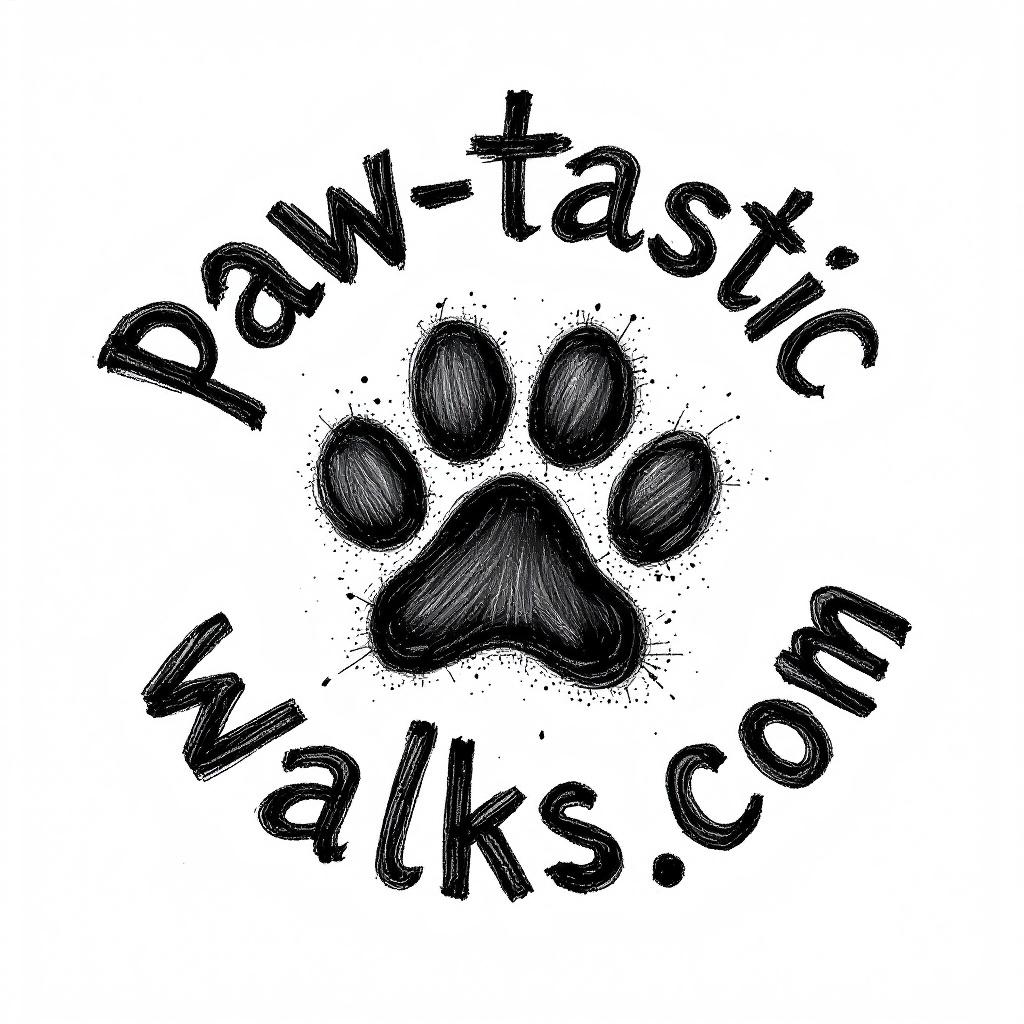Practical Solutions and Dog Walking Services in East Cornwall
Dogs can struggle with anxiety just like people. You might notice signs such as shaking, excessive barking, restlessness, or even destructive chewing.
In East Cornwall, these behaviors aren’t just frustrating—they show your dog needs extra support and understanding.
Addressing anxiety in dogs early helps prevent bigger problems and keeps your furry friend happy, healthy, and easier to manage on daily dog walks.
Anxiety treatment for dogs combines regular exercise, simple training systems, and plenty of reassurance. Services like dog walking services with a professional dog walker can bring needed structure and comfort, especially for anxious pups or busy owners searching for “pet walking near me.”
Friendly, local dog walking and puppy walking services offer routines that help reduce stress and build confidence, whether your dog joins group dog walks or sticks with solo outings.
By choosing reliable dog walker support and safe, dog exercise services tailored to your dog’s needs, you give your pet a chance to work through their worries.
Regular daily dog walks and play can make a world of difference. For even more ideas or tips, exploring resources like Dog behavior on Wikipedia can add helpful background.
Ready to learn how to support your dog and find the best local dog walking rates for your situation?
Let’s get started.
Common Causes and Types of Anxiety in Dogs
Watching your dog pace, whine, or hide can tug at your heart. Dogs, like people, can struggle with anxiety or stress for many different reasons.
Some breeds are more sensitive, and some triggers are easy to spot—others can be a mystery. Knowing what causes these nervous feelings in your dog helps you choose the right anxiety treatment for dogs.
Let’s run through what sparks canine anxiety and the common ways it shows up, so you feel more prepared and empowered as a dog parent.

Main Causes of Anxiety in Dogs
Several triggers can spark or worsen anxiety in your pet. Spotting the cause is the first step to tailoring a dog walking services routine or anxiety treatment for dogs that works.
You’ll often see these culprits behind anxious behavior:
- Loud Noises: Thunder, fireworks, and even the vacuum can frighten dogs.
- Changes at Home: Moving house, new family members, or a new pet can cause stress.
- Lack of Socialization: Dogs that miss out on early play and walks can be uneasy around other people or animals.
- Separation From You: Being left alone often causes separation anxiety.
- Inconsistent Routines: Irregular daily dog walks, feeding, or exercise schedules can leave your dog feeling insecure.
- Past Trauma or Neglect: Dogs rescued from bad situations may carry memories that trigger fear.
- Medical Issues: Pain or illness sometimes hide behind puzzling behavior.
Tip: Keeping a consistent local dog walking plan or using a professional dog walker helps build trust and routine, making your dog feel safe.
Types of Anxiety You Might See
You might wonder, “Is my dog just having a moody day, or is it true anxiety?” Here are the most common types that affect your dog’s mood and daily life:
- Separation Anxiety: Dogs show panic when you leave. Look for barking, howling, or chewing as soon as you step out. Home-alone blues can make solo time hard for both of you.
- Social Anxiety: You’ll spot this during group dog walks. Signs like hiding, growling, or shaking appear with unfamiliar people or dogs. Early puppy walking services and social sessions can help prevent this.
- Noise Anxiety: Loud sounds—think storms or traffic—can send dogs running for cover. Whining, drooling, and trembling are all common.
- Generalized Anxiety: The trickiest to pinpoint, this type appears as constant worry about different things. Dogs may pace, pant, or follow you everywhere.
- Travel Anxiety: Even a short car trip can make some pups drool or shake. Safe travel harnesses and dog exercise services make journeys less stressful.
Understanding what triggers your dog lets you work with your vet, a behaviorist, or even your reliable dog walker to build a plan that actually helps.
Trainers often use easy systems of rewards, reassurance, and gradual exposure to triggers. The right dog walking services also help by providing controlled activities with trusted supervision.
Tip: Tug toys offer not just enrichment but also a great way for anxious dogs to focus their minds and energy, turning nerves into playful bonding time.
Looking for more details about canine behavior and body language? The dog behavior section on Wikipedia explains more about the science behind how and why your dog reacts the way they do.
Knowing the causes and types of anxiety or stress is your first step in helping your dog feel at ease.
With a blend of knowledge, gentle support, and regular routines—including daily dog walks—your four-legged pal can live a happier, less anxious life.
Effective Anxiety Treatments and Daily Support
Supporting your dog through anxiety means focusing on gentle training, reliable routines, and fun activities that encourage calmness.
You don’t need fancy gear or an expert-level knowledge of dogs. Simple changes, positive habits, and a cheerful atmosphere can make your dog’s world feel much safer and happier.
Let’s look at some daily steps you can take at home and how local dog walking services in East Cornwall can help you and your anxious best friend.
Training and Behaviour Modification for Anxiety
Anxiety doesn’t have to rule your dog’s life. With steady training and daily support, you can help your dog handle stress in a safer and easier way.
Here are straightforward methods you can use:
- Build Positive Associations: Pair common triggers (like you picking up your keys) with special treats or cuddles. This helps your dog learn that what once scared them now means something good is about to happen.
- Gradual Desensitization: Take things slow. For noise anxiety, start with quiet sounds and tiny exposures, rewarding any sign of relaxation. You then gently increase the challenge as your dog gains confidence.
- Use Treats and Praise: Celebrate even the smallest wins. When your dog stays calm through a trigger, reward with a tasty treat or their favorite toy. This builds trust and boosts confidence.
- Consistent Routines: Regular schedules around meals, daily dog walks, and bedtime create a sense of predictability. Dogs with set routines often feel less anxiety.
Working with a professional dog walker can really help reinforce these routines.
Dog walkers keep walk times steady, offer controlled socialization, and keep a cheerful mood, all of which help lower your dog’s stress.
Not sure where to begin with new dogs or large breeds? Take a look at these Rottweiler walking tips for ideas that work for any dog needing steady, structured walks.
Need support for specific issues or want to chat about the best way to introduce training routines? Contact Paw-Tastic Walks.
They can help you develop simple, practical systems that keep your dog feeling safe, especially during group dog walks.
The Role of Exercise, Walks, and Enrichment in Reducing Anxiety

Daily activity is like magic for a worried dog’s mind.
Dog walking services, regular exercise, and enrichment activities all help soothe nerves and bring a sense of purpose to your dog’s day.
Here’s what makes the difference:
Benefits of Exercise and Dog Walks:
- Reduces nervous energy: Movement helps burn off tension so your dog doesn’t have as much energy left for worry.
- Encourages calm behavior: Tired dogs are more likely to relax at home.
- Supports social skills: Group dog walks and puppy walking services encourage positive interaction, which builds confidence.
- Improves physical health: Walks in the fresh Cornish air support joint health, digestion, and even healthy weight.
- Keeps routines steady: Using a reliable dog walker means exercise happens, rain or shine, even when life gets busy. For days that are especially wet, check out advice on walking your dog in the rain.
Mindful Enrichment for Relaxation: Enrichment keeps your dog’s brain busy, which is crucial for managing anxiety.
Here are a few activities:
- Chew or puzzle toys to keep them problem-solving.
- Play sessions with tug toys for physical fun and bonding.
- Scent games or treat hunts to spark your dog’s natural curiosity.
- Trying new routes or surfaces on walks to break up routine and keep things interesting.
Mental stimulation from enrichment helps channel your dog’s energy into creative play, not nervous habits or barking.
Read about the science of dog enrichment on Wikipedia, which explains how these simple activities reduce stress and improve well-being for animals of all shapes and sizes.
Exercise and enrichment go hand in hand. They offer your dog a safety net of routine, a sense of accomplishment, and a positive way to cope with the world around them.
When you use trusted dog exercise services or reliable local support, you share this journey—making “pet walking near me” more than just a search, but a true, encouraging partnership.
Practical Tips for East Cornwall Dog Owners
Living in East Cornwall means you enjoy wild beaches, moorland walks, and a friendly local vibe that’s perfect for dogs.
But if your best friend struggles with anxiety, those everyday adventures sometimes need extra planning.
Simple routines, training, and calm encouragement go a long way.
Here’s how you can make the most of life with your dog, while easing their worries and giving them the structure they crave.
 Photo by Julia Barrantes
Photo by Julia Barrantes
Start with Simple, Steady Routines
Dogs in East Cornwall thrive on routine, especially if they experience anxiety. Stick to regular feeding times, daily dog walks, and bedtime.
Predictability calms nerves and helps your dog see the world as a safe place.
- Keep walk times consistent—even a quick stroll at the same time each day can work wonders.
- Use a professional dog walker if your schedule is unpredictable or you need a break.
- Try dog exercise services for extra support with energetic or large breeds.
This routine doesn’t have to be rigid—just try to create a daily rhythm that feels reliable and easy to follow.
Choose Calm Walking Spots
Not every route is right for a nervous dog. Luckily, East Cornwall is full of dog-friendly footpaths and quieter beaches.
Opt for low-traffic areas where you can avoid overwhelming sights or sounds. If you notice your dog calming as soon as the crowds thin, you’ve found a winner.
- Early mornings or late evenings are usually quieter for walks.
- Look out for local parks or coastal paths with space for distance from strangers or other dogs.
- Take advantage of group dog walks to slowly build your dog’s confidence around new friends.
If you’re not sure where to go on rainy days, advice on walking your dog in the rain can help you keep up with exercise, even when the Cornish weather is wild.
Use Enrichment and Toys for Confidence
A busy mind is a happy mind. If your dog gets anxious at home or outdoors, keep them entertained and focused.
Tug toys are brilliant for relieving stress and building a strong bond—you’re not just playing, you’re helping your dog trust and relax.
Other enrichment ideas to try:
- Scatter feeding (hide treats around the garden or home)
- Puzzle feeders for mealtimes
- Gentle scent trails on your walks
Not only does this tire your dog out, but it also encourages problem-solving and confidence. Explore more about environmental enrichment for dogs for a rundown of why these simple games work.
Stay Calm and Use Gentle Reassurance
Dogs look to you for cues. If you stay calm, speak softly, and avoid rushing, your dog learns the world isn’t so scary.
When you see early signs of stress, pause and let your dog take things at their own pace.
- Offer praise and treats for relaxed behavior.
- Use gentle touch or a favorite phrase to comfort your dog.
- Avoid forcing introductions or scary situations—slow progress is true progress.
A reliable dog walker can model this supportive approach on their outings, helping your dog gain confidence one step at a time.
Make Use of Local Help and Community Resources
Don’t feel you have to handle everything on your own. East Cornwall is filled with caring professionals and other dog owners facing the same challenges.
Ask neighbours about the best low-key routes, join a local dog group, or connect with puppy walking services for specialised advice.
If you’re worried about your dog slipping their collar during a walk, a GPS dog tracker can add peace of mind.
You might also want to compare dog walking rates if you’re thinking of booking more support.
Simple routines, a few helpful tools, and a friendly network can transform daily life for you and your anxious dog.
When in doubt, reach out to local experts—they’re always happy to help you find what works best in your corner of Cornwall.
Conclusion
Helping your dog thrive with anxiety starts with small, steady changes that fit right into daily life. Consistent routines, gentle training, and plenty of activity are your best tools.
Community support, whether from local friends or a reliable dog walker, lifts the weight you might feel on your own.
The right approach to anxiety treatment for dogs blends patience, reassurance and the practical help found in trusted dog walking services or puppy walking support.
When the signs of anxiety seem hard to manage, reaching out to professionals is a smart move.
You never need to face these challenges alone, and with every calm walk, uplifting group dog walk, or heartfelt connection, your bond grows stronger.
Remember, even tried-and-true resources like the dog training article on Wikipedia show just how effective daily habits and community help can be.
Thank you for caring enough to seek answers. If you’re ready to give your dog the best, consider the value of dog exercise services, steady routines, and plenty of reassurance.
A happier, more relaxed companion is just a few positive steps away. What new tip or routine will you try first?












